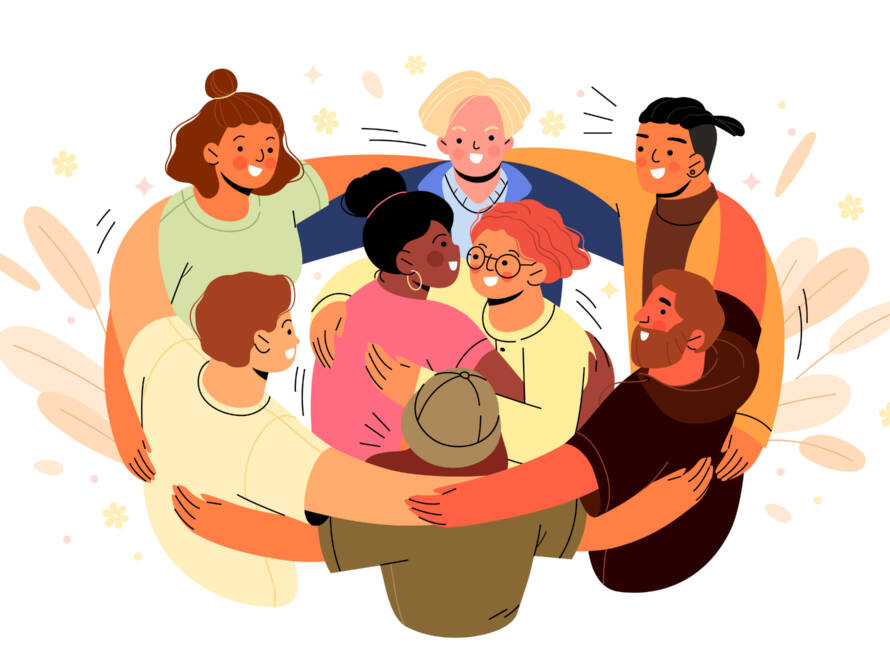In recent months, India has seen a significant rise in conversations around workplace equity — from gender pay gap reports and caste-based hiring biases to legal reforms supporting transgender rights in employment. While these discussions are gaining traction, the real question remains: How inclusive are our organizations in practice?
Many companies claim to support Diversity, Equity, and Inclusion (DEI), but few pause to evaluate their actual impact. Assessing organizational inclusivity isn’t just a once-a-year survey; it’s an ongoing commitment to understanding how people truly experience the workplace — across identities, roles, and hierarchies.
Here’s a deeper look at the key questions that help reveal how inclusive your organization really is.

1. Does Your Leadership Reflect and Reinforce Organizational Inclusivity?
Start at the top. Leadership shapes culture, not just strategy.
- Who occupies positions of power in your company? Are they diverse in gender, caste, disability, age, region, or socio-economic background?
- Do leaders actively participate in DEI efforts or simply endorse them?
- How often are inclusion metrics discussed in boardrooms?
Representation without involvement often leads to tokenism. For organizational inclusivity to be authentic, leadership must model inclusive behavior — not just approve it from a distance.
2. Are Your Hiring Practices Aligned with Organizational Inclusivity Goals?
Hiring is one of the most direct ways to bring DEI intentions into reality.
- Do your job descriptions use inclusive language?
- Are hiring managers trained in unconscious bias?
- Are you tapping into talent pools that go beyond traditional urban, elite institutions?
With India’s rapidly expanding digital and educational access, companies now have the opportunity to recruit from more diverse geographies and communities. Assessing whether your hiring processes are intentionally inclusive is foundational to building an equitable workplace.
3. How Safe Do Employees Feel Raising DEI Concerns? A Litmus Test of Organizational Inclusivity
Inclusivity isn’t tested during celebrations — it’s tested in conflict.
- Do your employees feel safe raising concerns around discrimination or microaggressions?
- Is there a formal grievance redressal mechanism that’s accessible and fair?
- Are feedback channels confidential and trusted?
An inclusive organization ensures that voices — especially those of marginalized employees — are heard, protected, and responded to with accountability. If employees fear speaking up, the culture may not be as inclusive as it seems on the surface.
4. Do Day-to-Day Work Practices Foster Organizational Inclusivity?
Policies may set the tone, but daily practices build the culture.
- Are meetings, communication, and decision-making processes inclusive of all identities?
- Do flexible work policies accommodate employees with caregiving responsibilities or disabilities?
- Are religious and cultural observances acknowledged and respected?
Inclusivity must be embedded into the lived experiences of employees — not just on paper or during DEI month. It’s about the ordinary, everyday choices that shape belonging.
5. Is Organizational Inclusivity Measured and Acted Upon?
You can’t manage what you don’t measure.
- Are you collecting data on diversity beyond just gender — such as caste, religion, language, disability, and LGBTQ+ identities?
- Do you conduct regular DEI audits, pulse surveys, or inclusion interviews?
- What actions follow the data? Are gaps acknowledged, and are there timelines to address them?
India’s evolving DEI landscape demands more than performative gestures. True organizational inclusivity requires a data-driven yet human approach — where metrics inform real change, and insights lead to accountability.
6. Is DEI a Standalone Initiative or Woven into Business Strategy?
Too often, DEI efforts are siloed in HR departments or relegated to special events.
- Is DEI integrated into your core business strategy, customer engagement, and product development?
- Are inclusive values reflected in how you partner, market, and innovate?
From fintech firms creating products for non-English speakers to logistics companies investing in inclusive hiring of women in non-traditional roles — inclusivity is becoming a business differentiator in India. It’s time we stopped treating DEI as “extra” and recognized it as essential.
Final Thoughts: Inclusivity is a Journey, Not a Checklist
Organizational inclusivity isn’t a status to achieve — it’s a continuous practice to refine. It requires courage, commitment, and the willingness to ask tough questions, again and again.
The good news? You don’t have to do it alone. Explore the DEI Toolkit by India Diversity Forum — a structured, practical resource designed to help organizations at every stage of their DEI journey. Download tools, access guides, and evaluate your progress with clarity and purpose. Visit DEI Toolkit Now


